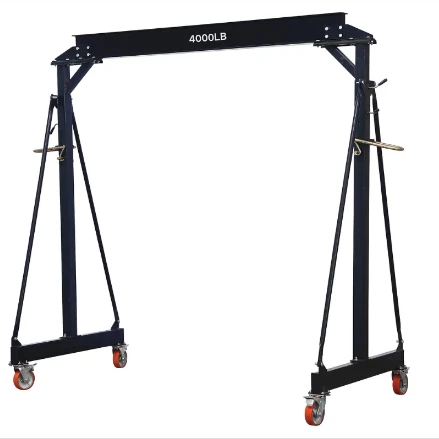Efficient Solutions for Transporting Heavy Machinery with Moving Dollies
The Evolution and Importance of Machine Moving Dollies
In the world of logistics, construction, and manufacturing, the significance of efficient material handling cannot be overstated. One of the essential tools that have emerged to facilitate this process is the machine moving dolly. These innovative devices allow for the safe and effective transportation of heavy machinery, materials, and awkward loads. This article delves into the evolution, functionality, and importance of machine moving dollies, exploring how they have become indispensable in various industries.
The Evolution of Machine Moving Dollies
Historically, moving heavy loads required brute strength and significant manpower. However, as industries advanced, the need for more efficient and safer methods became apparent. The first iterations of dollies can be traced back to simple wooden sleds that helped shift loads by utilizing manpower. Over the years, this concept evolved into metal-framed dollies, equipped with wheels for easier movement.
The introduction of advanced materials and engineering techniques during the 20th century led to the development of specialized machine moving dollies. These modern dollies are often constructed from high-strength steel or aluminum, designed to support immense weight without compromising stability. Furthermore, innovations such as pneumatic tires and locking mechanisms have significantly enhanced their functionality, making them suitable for various terrains and load types.
Types of Machine Moving Dollies
Today, a wide array of machine moving dollies is available, each designed for specific tasks. Some of the most common types include
1. Standard Dollies These are versatile and can be used for moving machinery, appliances, or furniture. They typically feature four wheels and a flat surface to support items.
2. Toe Jacks These specialized dollies have a hydraulic lift mechanism, allowing users to elevate heavy equipment slightly off the ground before rolling it on support casters. This is particularly useful for machinery that cannot be lifted with traditional methods.
3. Machinery Skates Designed specifically for heavy machinery, these skates feature low-profile designs and are often equipped with locking mechanisms to secure the load during transit.
machine moving dollies

4. Furniture Dollies While similar in design to standard dollies, furniture dollies often come with added padding or a carpeted surface to prevent damage to delicate items during movement.
Each type of dolly plays a critical role in streamlining operations in warehouses, factories, and construction sites, reducing the need for manual labor and decreasing the risk of injuries.
Importance in Various Industries
The application of machine moving dollies spans across several industries, showcasing their undeniable importance
- Manufacturing In manufacturing settings, handling large machinery can pose significant challenges. Dollies enable workers to reposition machines for maintenance or relocation without excessive strain, improving operational efficiency.
- Construction Construction sites are often cluttered and chaotic, requiring effective material handling solutions. Dollies simplify the movement of heavy construction equipment and materials, ensuring timely project completion and reducing the risk of accidents.
- Warehousing and Distribution In warehouses, the need to transport goods efficiently is paramount. Machine moving dollies help in swiftly moving large pallets, heavy machinery, and other bulky items, maintaining productivity levels and reducing the likelihood of workplace injuries.
Conclusion
Machine moving dollies have revolutionized the way industries handle heavy loads, providing a safer and more efficient means of transportation. As technology continues to advance, it is likely that we will witness further innovations in dollies, enhancing their functionality and expanding their applications. For businesses focused on optimizing their material handling processes, investing in quality machine moving dollies is not just practical; it's essential for success. In summary, these unassuming yet powerful tools serve as the backbone of efficient logistics, ensuring that industries can operate smoothly and safely in a fast-paced environment.
-
Unlock Seamless Relocation with Our Heavy Equipment Moving ExpertiseNewsJun.06,2025
-
Unleash Unrivaled Flexibility with Our Adjustable Gantry CraneNewsJun.06,2025
-
Unleash Heavy-Duty Efficiency with Our Industrial Gantry Crane SolutionsNewsJun.06,2025
-
Revolutionize Steel Handling with Our Magnetic Lifter RangeNewsJun.06,2025
-
Master Equipment Mobility with Premium Machinery Mover SolutionsNewsJun.06,2025
-
Elevate Your Material Handling with Magnetic Lifter TechnologyNewsJun.06,2025
-
YS Permanent Lifting Magnets: The Smarter Way to Handle SteelNewsMay.22,2025
